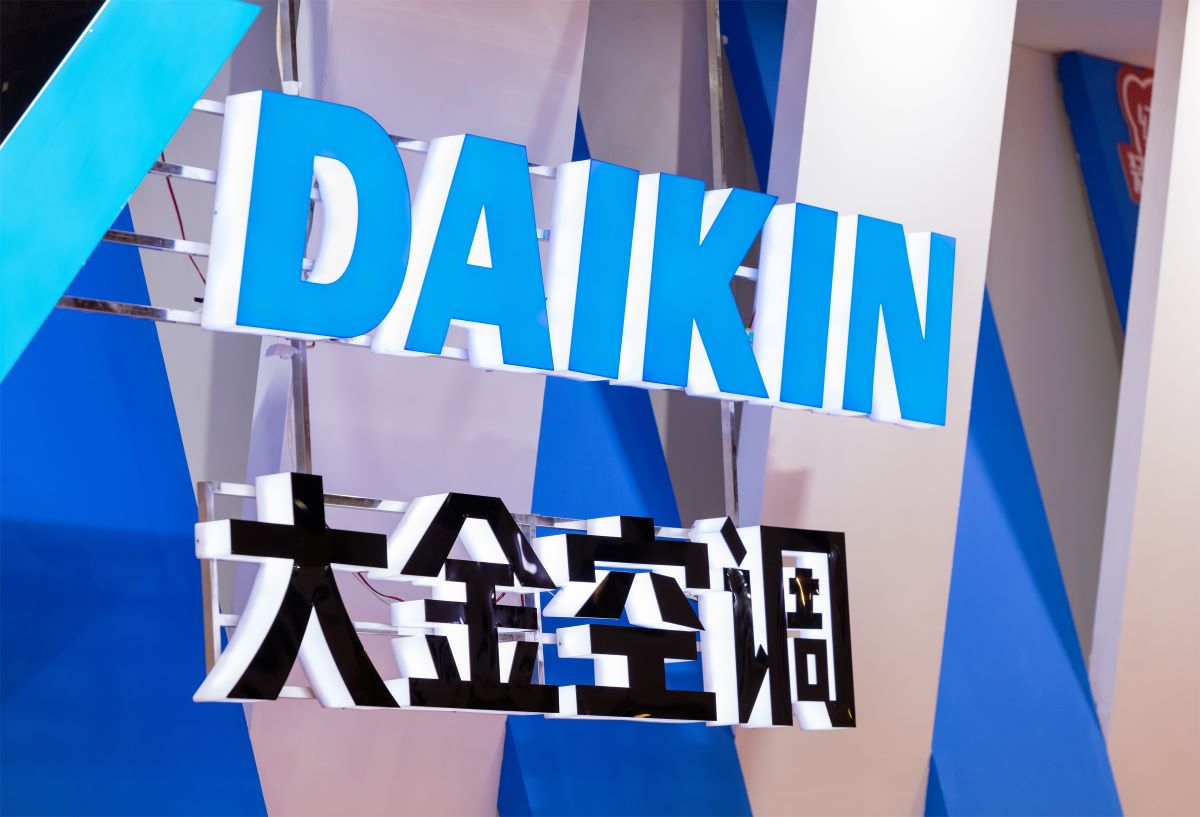The Osaka-based Daikin Industries Ltd. was founded in 1924 by Akira Yamada as Osaka Kinzoku Kogyosho LP and received its revised name in 1982. It expanded its business with air conditioning, fluorochemicals and filters in over 160 countries and production bases at over 100 locations. With innovation and sustainability as its core strategy, Daikin has invented technologies like variable refrigerant flow (VRF) air conditioners, split system air conditioners and R-410A refrigerant technology with Carrier Global corporation. By now, Daikin is the world’s largest manufacturer of air conditioners (AC).
Business model and stock movement
The Japanese company launched a strategic management plan in 2020 called “FUSION 25” to realise short-term profits and long-term growth and development. “Under FUSION 25, we plan to invest ¥137.0 bn (~$937 m) in digital technology over a period of three years through to fiscal 2023. Digital technology will be utilized particularly for the two themes put forth in FUSION 25—business innovation and process innovation,” said Masanori Togawa, President and CEO of Daikin.
“The growth in global demand for space cooling is one of the most critical yet often overlooked energy issues of our time. Energy demand for air conditioners will more than triple by 2050,” says International Energy Agency (IEA). Daikin is looking at using its cash reserves of $6.6 bn for expansion by acquiring companies to meet the rising demand due to global warming and rising affluence in emerging economies. The company made three major acquisitions – in 2006 (OYL Industries, Malaysia), 2012 (Goodman Global Group, U.S.) and 2019 (AHT Cooling Systems, Austria).
The Japanese company is also planning to invest over $294.9 m (40 bn yen) in Poland for a manufacturing unit of energy-efficient heating equipment by 2024. On completion, the unit will have the annual capacity of producing 400,000 units of heat pumps. European nations are incentivising the transition from fossil-fuel boilers to heat pumps with subsidies, opening this market for Daikin in the continent. In May 2022, the company’s sales volume for heat pumps increased by more than 50% in Europe.
The Osaka-based company’s stock, listed on the Tokyo Stock Exchange, has risen ninefold over the past decade to a market capitalization of 6.5 tn yen ($44 bn), which is more than that of its competitors Hitachi Ltd. and Panasonic Corp. Daikin’s stock is considered strong as it has given a price return of 428.26% over a span of 10 years, which has been the highest within all its peers i.e., Carrier Global Corporation, Johnson Controls International. The debt-to-equity ratio for the company has been reducing over the past 5 years from 51.8% to 30.9% with short-term assets exceeding short-term liabilities and return on investments (ROA) above the industry average.
Over the past year, Daikin’s stock price has declined more than 10%. It has a PE ratio of 31.41 and a forward PE ratio of 25.16. The current price-to-book ratio of Daikin is 3.08.
Daikin Industries aiming for sustainable growth
The global air conditioning market size was $129.38 bn in 2021 and is expected to register revenue growth at a CAGR of 5.9% till 2030, according to a report by Emergen Research. The growth prospects for Daikin look promising, and the company is betting high on multiple markets and manufacturing facilities, such as in India and Nigeria, to explore new revenue sources and reduce input costs.
India’s AC market is worth $2.1 bn according to the company and just 5% of India’s homes and businesses have air conditioners. Thus, Daikin is planning to double its sales in the country by 2025 and is building a third facility in India with an annual capacity of producing 3 million units. The production facility will also be used for exporting to the Middle East and Africa. Daikin is also assembling air conditioners in Nigeria out of a local manufacturing unit it set up with a local distributor. The company established its first office in the east African country Kenya in 2019 and its rental business in Tanzania in 2020. Daikin also announced opening its first training centre for the local workforce in Nigeria in September 2022.
In addition, Daikin Industries Ltd., is planning to shift its supply chain dependence away from Chinese-made parts by March 2024. Daikin has been largely dependent on China for parts since the middle of the 2010s, importing 35% of its requirements on a value basis in 2020, further reducing it to 20% in 2021. However, the lockdowns in Shanghai this year as a result of Beijing’s stringent zero-Covid policy caused a decrease in the manufacture of various parts, which left an impact on Daikin’s output.
The company now is looking for suppliers that manufacture outside of China and also started making components in Japan.










 Australia
Australia China
China India
India Indonesia
Indonesia Japan
Japan Malaysia
Malaysia Philippines
Philippines Singapore
Singapore South Korea
South Korea Taiwan
Taiwan Thailand
Thailand Vietnam
Vietnam
 Germany
Germany Hong Kong
Hong Kong USA
USA Switzerland
Switzerland Singapore
Singapore









